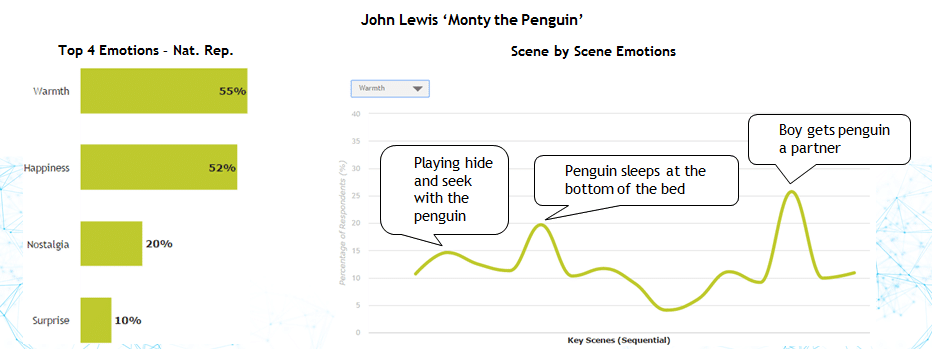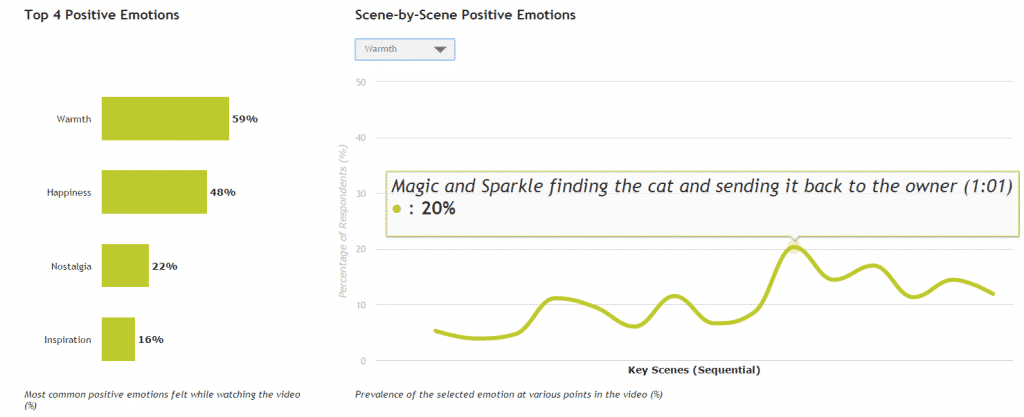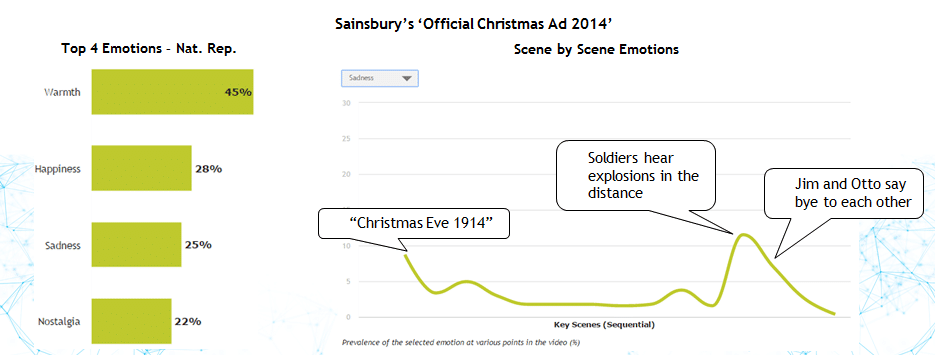The 12 Plays Of Christmas: The Really Early Guide On How To Create The Perfect Festive Ad (Part 1)
It’s Chriiiissstmasss! No, really. OK, they do say it comes earlier every year, but admittedly four-and-a-half months is pushing it.
But don’t worry, there is nothing wrong with our calendars and we are not one of those weird people who celebrate December 25th every day (as much as we love Wizzard’s classic Christmas hit).
Sure, there may not be any mistletoe or wine on show right now, but brand managers are already busy plotting their festive ad campaigns.
Which ad will be the talk of living rooms across the country this year? And how will John Lewis come up with anything better than a penguin on a trampoline?
Let’s face it, John Lewis’s festive ad campaigns is becoming as much a part of the Christmas story as mangers, shepherds and frankincense.
But last year we saw more and more brands upping their game to join the Christmas party. In the UK, Sainsbury’s controversial “Christmas is For Sharing” came close to taking the top spot, only for John Lewis to finish top of the pile once again. We also saw strong Christmas creatives from Mulberry, Burberry, M&S and Tesco.
In Germany, Edeka’s Kassensymphonie hit all the right notes, while across North America we saw a trailer for the movie Minions become the most shared Christmas ad of all time and a surprise hit from the police of a small town in Massachusetts.
But how do you create a fantastic festive ad? How do you make sure your ad is a creative Christmas cracker and not an undercooked turkey?
Well, Unruly has been tracking the most shared Xmas ads since 2006 and, using data collected by our Unruly ShareRank algorithm and our Unruly Custom Audiences platform on some of the biggest hits of 2014, we have come up with some content and distribution tips on how to create the perfect Christmas campaign.
Unfortunately, we have so much to talk about we’ve had to split it into three parts.
Here’s the first one. Hope you like it.
Play 1: Turn the emotions up to 11
OK, this is something we go on about a lot, we know. But did you know that videos which elicit strong emotional responses, whether they are positive or negative, are twice as likely to be shared than those which elicit weak emotional responses?
It seems obvious, but according to the book “Viral Marketing: The Science of Sharing” by Karen Nelson-Field, it’s where the vast majority of ads fall short. They simply don’t pack enough emotional punch to get people reaching for the share button.
As a general rule, if your video is to have a chance of social success, it should be arresting enough to elicit a physical reaction from the viewer (tears, laughter, goosebumps & gasps are all good).
Three hundred hours of video is uploaded to YouTube every minute alone, so your content needs to really stand out in order to get passed on. If you’re serious about creating a viral hit, your video will need to be this funny, this spectacular, this illuminating, this inspirational (you get the point!) if you want to be up there with the best of them.
This is particularly true during the Christmas period, when people are thinking with their hearts rather than their heads.
Ads that try appeal more to our wallets, such as this 2013 ad from Asda or this 2014 ad from Lidl, attract a lot fewer shares than heartwarming ads from such brands as John Lewis and Sainsbury’s.
Play 2. Get into the Christmas spirit
So, you know you want to create an emotional ad, but which emotions do you aim for with your Christmas ad? Well, going back to Dr Nelson-Field’s research again, and it suggests that video content which evoke strong positive emotions are 30% more likely to be shared than those which elicit strong negative emotions. This is the Season of Goodwill, after all.
But when you think of Christmas, which emotions do you think of? The happiness and warmth of the festive season? Of course. Surprise and excitement at opening presents and seeing loved ones? Sure. Nostalgia for all those Christmases you had a when you were a child? Definitely.
Well, when we tested John Lewis’s Christmas No.1, Monty The Penguin, we found the ad ranked extremely highly for all these emotions (see chart below).

Warmth, in particular, driven in the ad by the relationship between the boy and his penguin, was a key emotion, peaking at the points when the penguin sleeps at the bottom of the bed and the point where Monty finally finds a partner.
So, by consistently tapping into the key emotions of Christmas – the feelings that are the most likely to resonate around that time of the year – John Lewis has managed to create a template for Yuletide social video success.
M&S also tapped into these emotions in its #FollowTheFairies campaign last year (see chart below). Warmth, in particular, which peaked at the scene when they return the lost cat to its owner, was a key trigger. Interestingly, women had a much stronger emotional reaction to the cat scene than men.
M&S: Magic and Sparkle

However, the ad failed to elicit the same intensity of emotions from its viewers as Monty managed, which explains why it only managed 173,273 shares, making it only the eighth most shared Xmas ad of 2014.
Remember, it’s about emotional appeal, not creative appeal.
Go back into the archive, and many of their other hits, from “The Bear and the Hare” to “The Journey”, use the same formula. As does WestJet’s “Real-Time Giving”, the second most shared ad of all time.
Play 3. Add a little sadness to intensify feelings of warmth and happiness
It may seem odd to talk about sadness during Xmas time (even if it is four months away), but anyone who has had to endure UK TV soap EastEnders on Christmas Day will be hard pressed to think of it as the season to be jolly.
But it’s not just trashy soap operas. If you think of all the great Christmas stories and films, such as It’s A Wonderful Life, A Christmas Carol (even The Muppets’ version), and Miracle on 34th Street, they all have a touch of sadness to them. A bitter, dark vein through the Christmas cheese.
Of course, this is just good storytelling. After all, how can we really truly feel joy if we have never experienced sadness? A hero needs a villain, just as light needs the dark. But Christmas is arguably a time when viewers are more likely to let their guards down and therefore feel emotions more intensely.
Such a magical mix of emotions was mastered perfectly by Sainsbury’s controversial “Christmas is for Sharing”, which depicts the famous Christmas Day truce between German and British soldiers during World War I.
As you can see from the chart below, the supermarket chain’s ad – the third most shared Holiday ad in 2014 – evoked intense feelings of warmth, sadness, happiness and nostalgia from large numbers of its audience.

Viewers were saddened by the brutality of the war and the separation of the video’s two main characters – British soldier Jim and his German counterpart Otto.
These sad scenes only intensified the feelings of warmth and happiness at the human spirit shown by the soldiers on the front.
John Lewis may be known for its heartwarming commercials, but it also manages to use sadness well in its commercials, from Monty’s longing for a partner to the bear’s initial rejection of Xmas in the 2013 ad “Bear and the Hare” (although he is supposed to be hibernating).
OK, that’s the end of part one. You can find part two here.
[pardot-form id=”4616″ title=”Trending Content Sign Up”]
